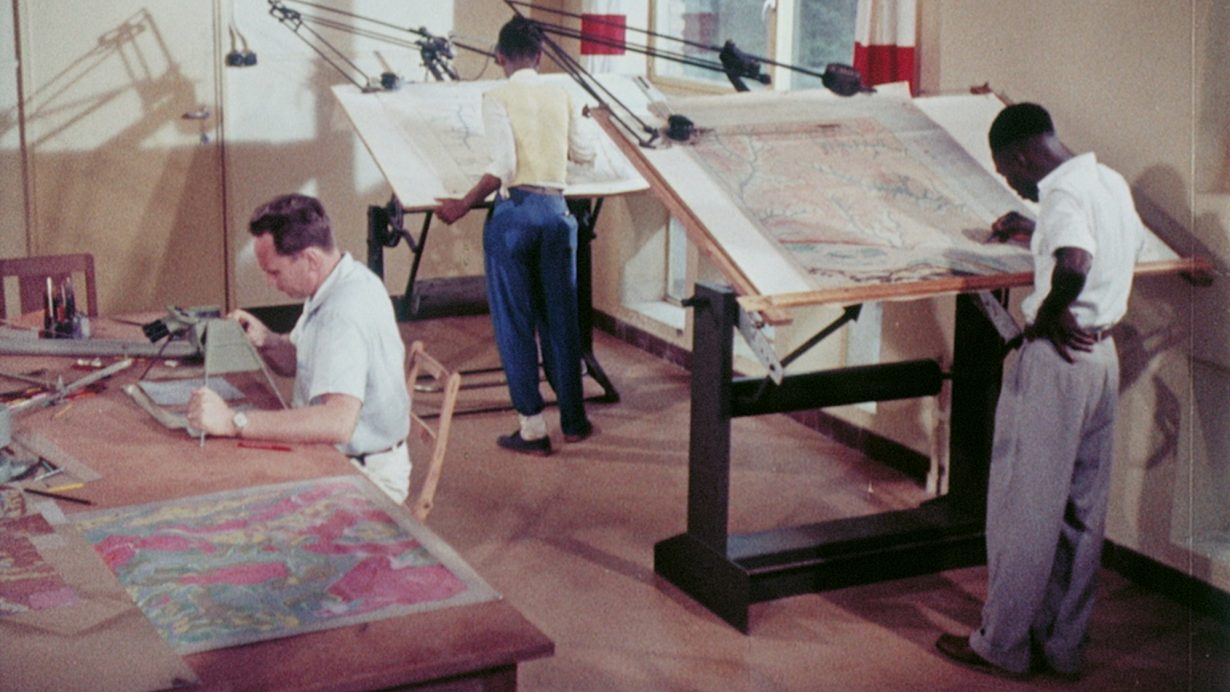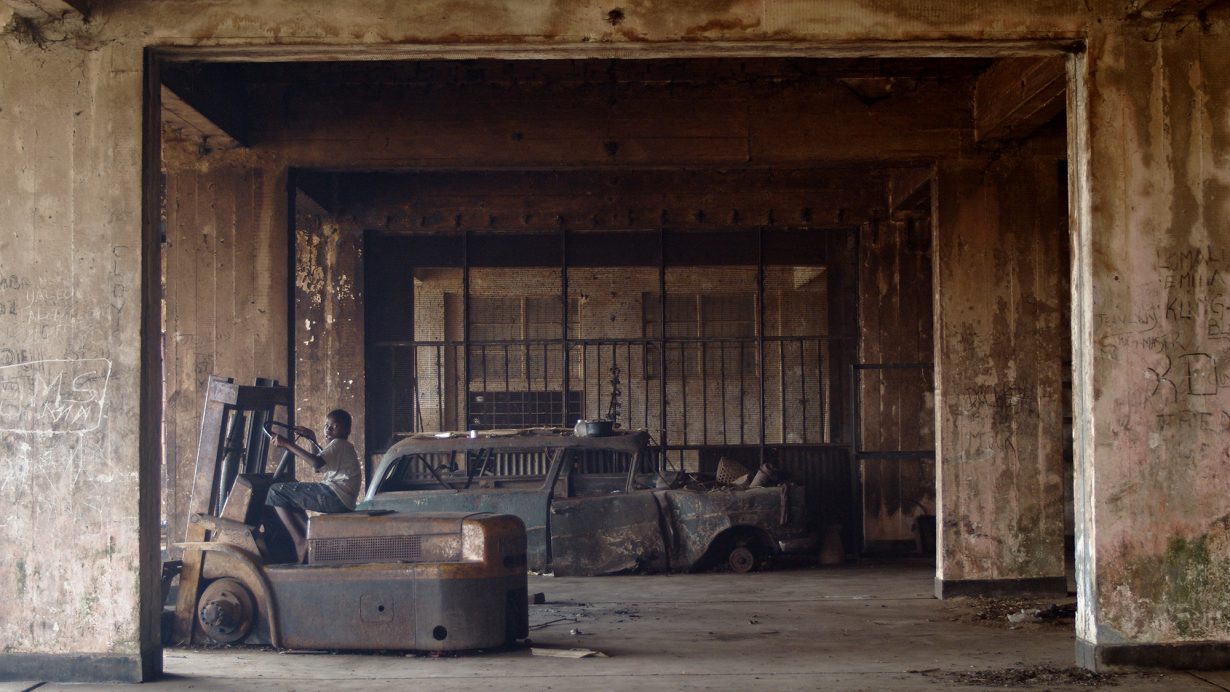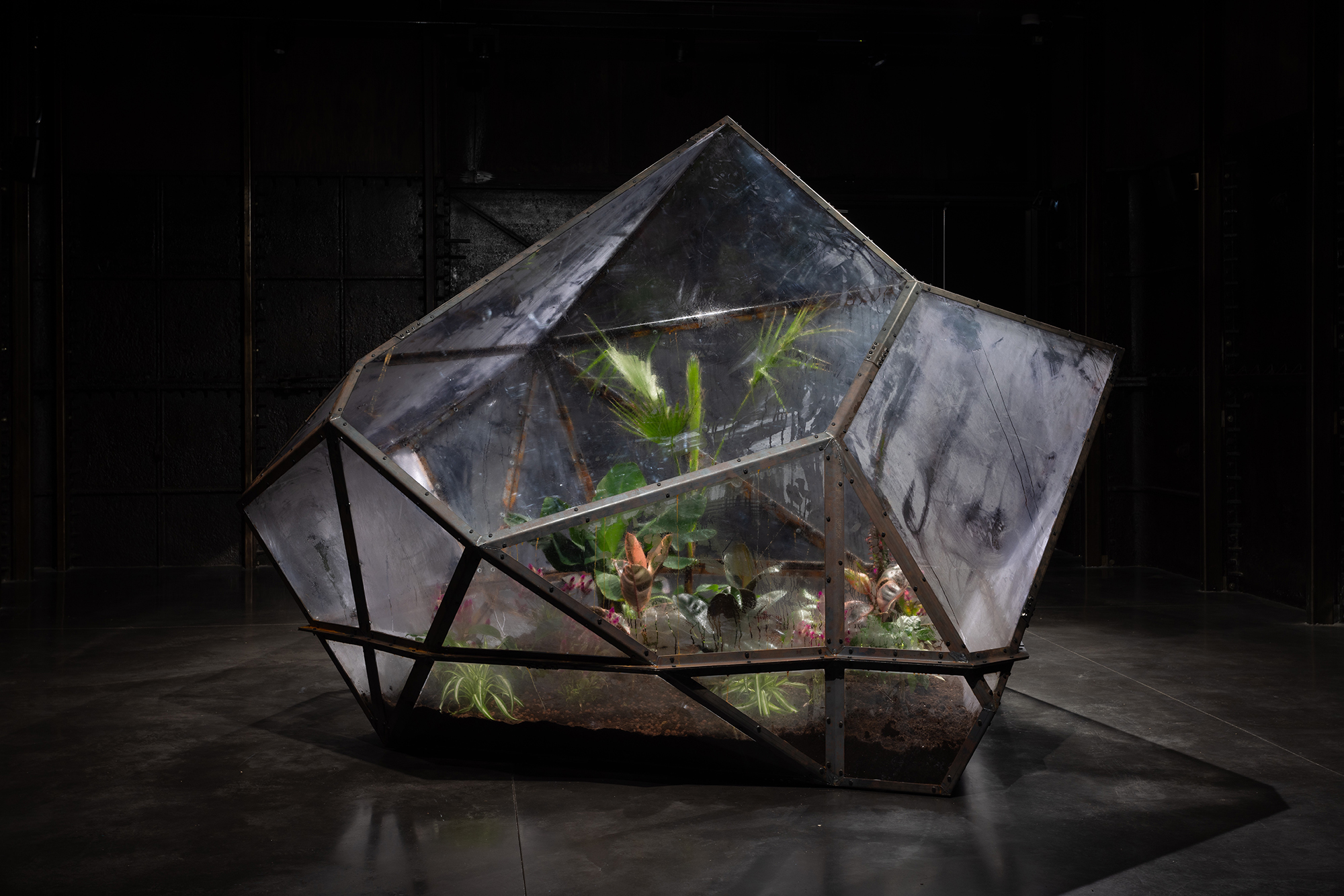Baloji’s densely research-based art questions if colonial histories can ever be left behind
A disquieting terrarium dominates the Tank Space at Goldsmiths CCA. …and to those North Sea waves whispering sunken stories (II) (2021) features an eerie structure, its glass panels fogged with condensation produced by its enclosed ecosystem of African plants. Water seeps onto the polished concrete floor from its metal seams. The terrarium’s strange crystalline shape is inspired by both Wardian cases – devices once used to transport plants by sea – and uranium ore, a material mined in the Democratic Republic of the Congo (DRC). Accompanying the structure is an audio recording of Albert Kudjabo, a Congolese soldier captured during the First World War and studied by German Army ethnographers, rhythmically drumming and singing. These elements coalesce in a discordant cacophony of sensation, the terrarium’s imposing materiality contrasting with the fragility of the audio, creating a palpable sense of dislocation in the space – between plants severed from their habitat and a recording obtained under duress. Through this powerful juxtaposition, Congolese photographer and artist Sammy Baloji foregrounds with striking clarity themes of extraction and displacement, and the lasting impacts of the DRC’s grim history under Belgian colonial rule, motifs that recur to varying levels through the other works on show.
Downstairs, Tales of the Copper Cross Garden Episode I (2017) is a moving image work appraising a metal foundry’s process, as it melts copper and spins it into wire. The choreography of workers carrying out various stages of production is overlayed intermittently with writings by Congolese philosopher Valentin-Yves Mudimbe, reflecting on his early education by colonial missionaries and, later, on his entering the Catholic seminary. The dissonant bold typeface Baloji uses for these visual interruptions is softened by various overdubs of choral music, briefly silencing the mechanic factory sounds, in an action that heavily insinuates the Catholic Church’s complicity in colonial exploitation. Yet the clarity of the work falters, as it feels contingent on familiarity with Mudimbe’s texts to grasp the works’ wider implications, while the accompanying wall vinyl depicting singing choirboys acts as a more overt signpost, acknowledging potential gaps in our understanding and hurrying you to the desired conclusion.


Upstairs, Aequare. The Future that Never Was (2023) achieves a greater impact. The film contrasts colonial era propaganda with contemporary footage of the Yangambi rainforest. Through adept cutting between present and past, the film questions if colonial histories can ever be left behind – showing that contemporary environmental workers still inhabit the same buildings installed by such regimes. Similarly, in Still Kongo I-V (2024), aerial archive photographs of the Congolese rainforest – taken to survey the land for further potential exploitation – are housed in afzelia wood frames intricately carved with concentric squares or dotted with pushpins. Severed from their archival context, the photographs achieve an almost painterly quality: their rigid, hatched tonalities resemble abstract compositions. The duality between the work’s inherent aesthetic appeal and what the images depict – material extraction visible in patches of dense forest removed, the scars of colonial exploitation forever etched into the landscape – echoes the disquiet of the installation work.
Such densely research-based art requires a delicate balance to maintain critical clarity without veering into overly opaque theorisation. Baloji achieves this in many of the works on show here, though the remaining ambiguities are perhaps the price paid when grappling with histories as complex and layered as these.
Sammy Baloji at Goldsmiths CCA, London, through 12 January
